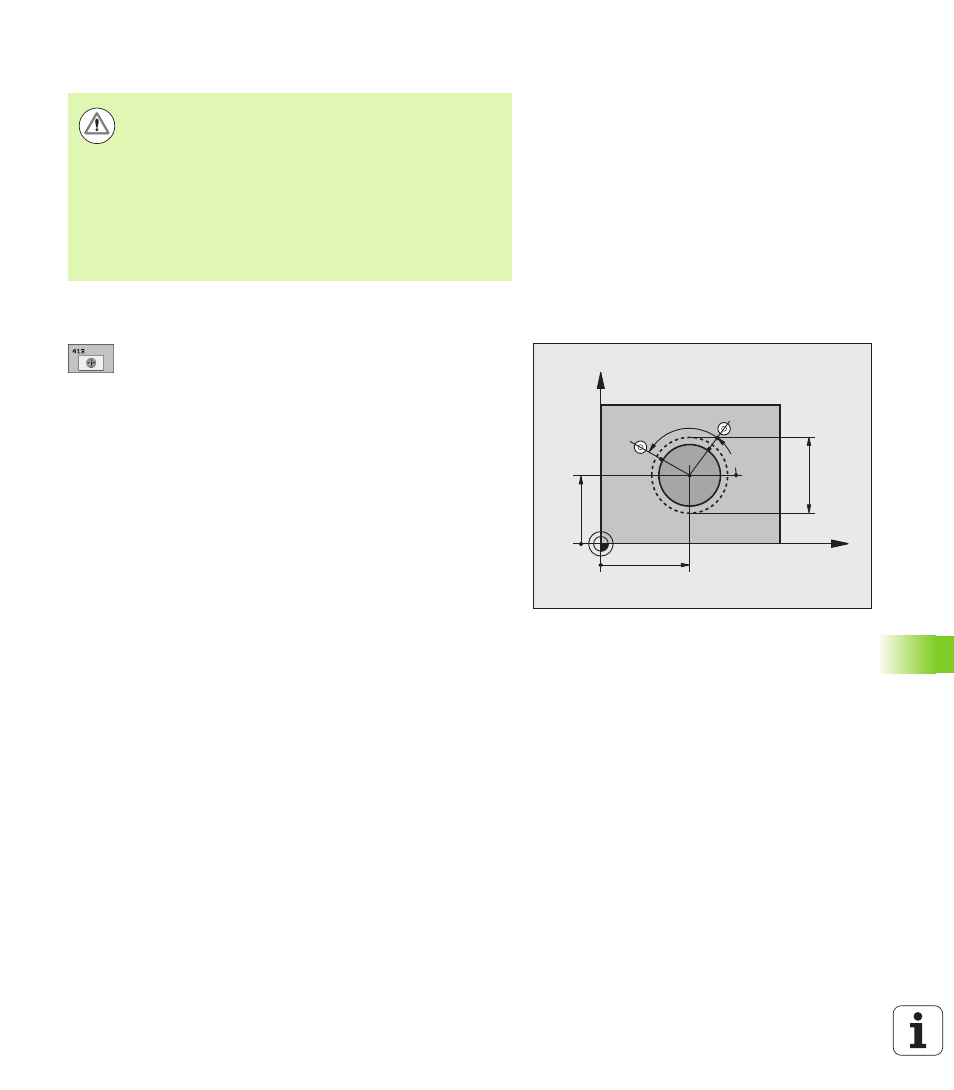Please note while programming, Cycle parameters – HEIDENHAIN iTNC 530 (340 49x-05) Cycle programming User Manual
Page 353

HEIDENHAIN iTNC 530
353
15.7 D
A
TUM FR
OM OUTSIDE OF CIR
C
LE (Cy
c
le 413, DIN/ISO: G413)
Please note while programming:
Cycle parameters
U
Center in 1st axis
Q321 (absolute): Center of the
stud in the reference axis of the working plane. Input
range: -99999.9999 to 99999.9999
U
Center in 2nd axis
Q322 (absolute): Center of the
stud in the minor axis of the working plane. If you
program Q322 = 0, the TNC aligns the hole center to
the positive Y axis. If you program Q322 not equal to
0, then the TNC aligns the hole center to the nominal
position. Input range: -99999.9999 to 99999.9999
U
Nominal diameter
Q262: Approximate diameter of the
stud. Enter a value that is more likely to be too large
than too small. Input range: 0 to 99999.9999
U
Starting angle
Q325 (absolute): Angle between the
reference axis of the working plane and the first touch
point. Input range: -360.0000 to 360.0000
U
Stepping angle
Q247 (incremental): Angle between
two measuring points. The algebraic sign of the
stepping angle determines the direction of rotation
(negative = clockwise) in which the touch probe
moves to the next measuring point. If you wish to
probe a circular arc instead of a complete circle, then
program the stepping angle to be less than 90°. Input
range: -120,0000 to 120.0000
Danger of collision!
To prevent a collision between touch probe and
workpiece, enter a high estimate for the nominal diameter
of the stud.
Before a cycle definition you must have programmed a
tool call to define the touch probe axis.
The smaller the angle increment Q247, the less accurately
the TNC can calculate the datum. Minimum input value:
5°.
X
Y
Q322
Q321
Q262
Q325
Q247